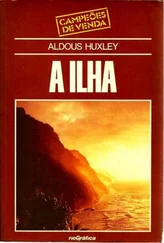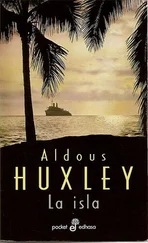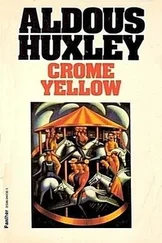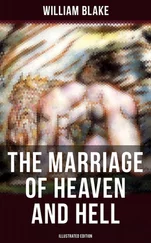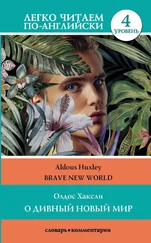Along with the praeternatural lights and colours, the gems and the ever–changing patterns, visitors to the mind's antipodes discover a world of sublimely beautiful landscapes, of living architecture and of heroic figures. The transporting power of many works of art is attributable to the fact that their creators have painted scenes, persons and objects which remind the beholder of what, consciously or unconsciously, he knows about the Other World at the back of his mind.
* * * * *
Let us begin with the human or, rather, the more than human inhabitants of these far–off regions. Blake called them the Cherubim. And in effect that is what, no doubt, they are—the psychological originals of those beings who, in the theology of every religion, serve as intermediaries between man and the Clear Light. The more than human personages of visionary experience never 'do anything.' (Similarly the blessed never 'do anything' in heaven.) They are content merely to exist.
Under many names and attired in an endless variety of costumes, these heroic figures of man's visionary experience have appeared in the religious art of every culture. Sometimes they are shown at rest, sometimes in historical or mythological action. But action, as we have seen, does not come naturally to the inhabitants of the mind's antipodes. To be busy is the law of our being. The law of theirs is to do nothing. When we force these serene strangers to play a part in one of our all too human dramas, we are being false to visionary truth. That is why the most transporting (though not necessarily the most beautiful) representation of 'the Cherubim' are those which show them as they are in their native habitat—doing nothing in particular.
And that accounts for the overwhelming, the more than merely aesthetic, impression made upon the beholder by the great static masterpieces of religious art. The sculptured figures of Egyptian gods and god–kings, the Madonnas and Pantocrators of the Byzantine mosaics, the Bodhisattvas and Lohans of China, the seated Buddhas of Khmer, the steles and statues of Copan, the wooden idols of tropical Africa—these have one characteristic in common: a profound stillness. And it is precisely this which gives them their numinous quality, their power to transport the beholder out of the Old World of his everyday experience, far away, towards the visionary antipodes of the human psyche.
There is, of course, nothing intrinsically excellent about static art. Static or dynamic, a bad piece of work is always a bad piece of work. All I mean to imply is that, other things being equal, a heroic figure at rest has a greater transporting power than one which is shown in action.
The Cherubim live in Paradise and the New Jerusalem—in other words, among prodigious buildings set in rich, bright gardens with distant prospects of plain and mountain, of rivers and the sea. This is a matter of immediate experience, a psychological fact which has been recorded in folklore and the religious literature of every age and country. It has not, however, been recorded in pictorial art.
Reviewing the succession of human cultures, we find that landscape painting is either non–existent, or rudimentary, or of very recent development. In Europe a full–blown art of landscape painting has existed for only four or five centuries, in China for not more than a thousand years, in India, for all practical purposes, never.
This is a curious fact that demands an explanation. Why should landscapes have found their way into the visionary literature of a given epoch and a given culture, but not into the painting? Posed in this way, the question provides its own best answer. People may be content with the merely verbal expression of this aspect of their visionary experience and feel no need for its translation into pictorial terms.
That this often happens in the case of individuals is certain. Blake, for example, saw visionary landscapes, 'articulated beyond all that the mortal and perishing nature can produce' and 'infinitely more perfect and minutely organized than anything seen by the mortal eye.' Here is the description of such a visionary landscape, which Blake gave at one of Mrs Aders' evening parties: 'The other evening, taking a walk, I came to a meadow and at the further corner of it I saw a fold of lambs. Coming nearer, the ground blushed with flowers, and the wattled cote and its woolly tenants were of an exquisite pastoral beauty. But I looked again, and it proved to be no living flock, but beautiful sculpture.'
Rendered in pigments, this vision would look, I suppose, like some impossibly beautiful blending of one of Constable's freshest oil sketches with an animal painting in the magically realistic style of Zurbaran's haloed lamb now in the San Diego Museum. But Blake never produced anything remotely resembling such a picture. He was content to talk and write about his landscape visions, and to concentrate in his painting upon 'the Cherubim.'
What is true of an individual artist may be true of a whole school. There are plenty of things which men experience, but do not choose to express; or they may try to express what they have experienced, but in only one of their arts. In yet other cases they will express themselves in ways having no immediately recognizable affinity to the original experience. In this last context Dr A. K. Coomaraswamy has some interesting things to say about the mystical art of the Far East—the art where 'denotation and connotation cannot be divided' and 'no distinction is felt between what a thing "is" and what it "signifies."'
The supreme example of such mystical art is the Zen–inspired landscape painting, which arose in China during the Sung period and came to new birth in Japan four centuries later. India and the Near East have no mystical landscape painting; but they have its equivalents—'Vaisnava painting, poetry and music in India, where the theme is sexual love; and Sufi poetry and music in Persia, devoted to praises of intoxication.' [5] A. K. Coomaraswamy, The Transformation of Nature in Art , p. 40.
* * * * *
'Bed,' as the Italian proverb succinctly puts it, 'is the poor man's opera.' Analogously, sex is the Hindu's Sung; wine, the Persian's Impressionism. The reason being, of course, that the experiences of sexual union and intoxication partake of that essential otherness characteristic of all vision, including that of landscapes.
If, at any time, men have found satisfaction in a certain kind of activity, it is to be presumed that, at periods when this satisfying activity was not manifested, there must have been some kind of equivalent for it. In the Middle Ages, for example, men were preoccupied in an obsessive, an almost maniacal way with words and symbols. Everything in nature was instantly recognized as the concrete illustration of some notion formulated in one of the books or legends currently regarded as sacred.
And yet, at other periods of history men have found a deep satisfaction in recognizing the autonomous otherness of nature, including many aspects of human nature. The experience of this otherness was expressed in terms of art, religion or science. What were the mediaeval equivalents of Constable and ecology, of bird watching and Eleusis, of microscopy and the rites of Dionysos and the Japanese Haiku? They were to be found, I suspect, in Saturnalian orgies at one end of the scale and in mystical experience at the other. Shrovetides, May Days, Carnivals—these permitted a direct experience of the animal otherness underlying personal and social identity. Infused contemplation revealed the yet otherer otherness of the divine Not–Self. And somewhere between the two extremes were the experiences of the visionaries and the vision–inducing arts, by means of which it was sought to recapture and re–create those experiences—the art of the jeweller, of the maker of stained glass, of the weaver of tapestries, of the painter, poet and musician.
Читать дальше


